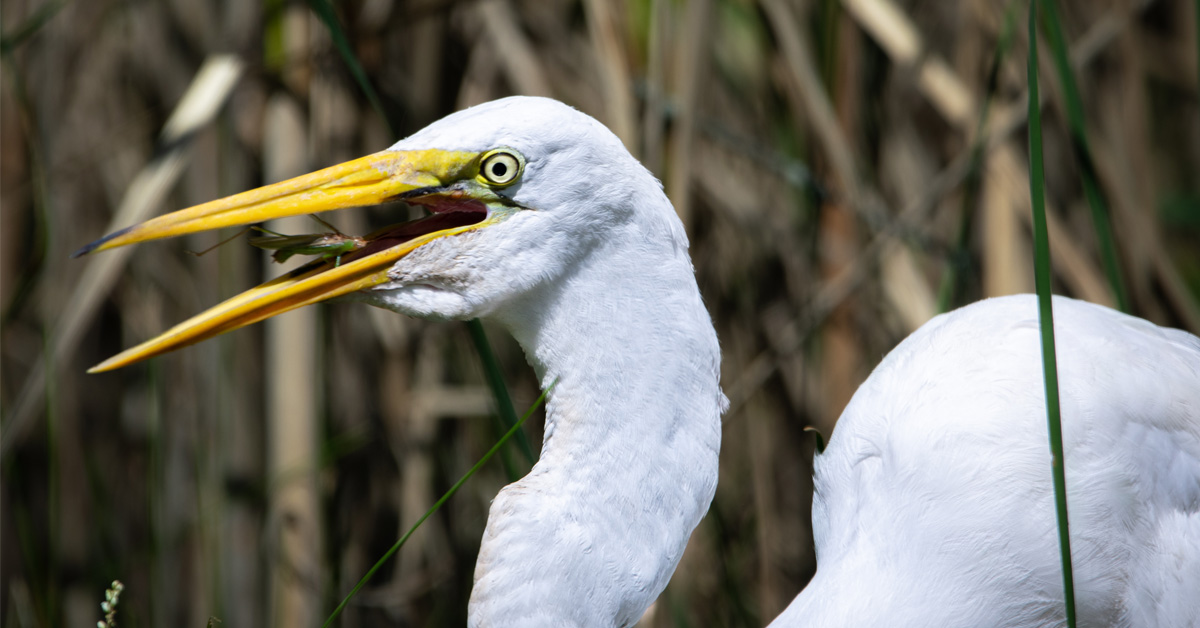
A great egret spotted at Hog Island Wildlife Management Area.
By Blogger Wade Monroe
Photos by Wade Monroe
This month I had the opportunity to explore the Tidewater Loop of the Virginia Bird and Wildlife Trail. The Tidewater loop is within the Coastal Region of the trail system and hosts eight locations, a majority of which are located along the James River in southeastern Virginia. I was eager to explore this loop as I had never been to any of the sites within the loop, and I am equally as excited to be able to share my experience with you now.
My first stop on the loop was Hog Island Wildlife Management Area. Located on the banks of the James River, Hog Island is actually a 3,900-acre wetland peninsula, not an island.
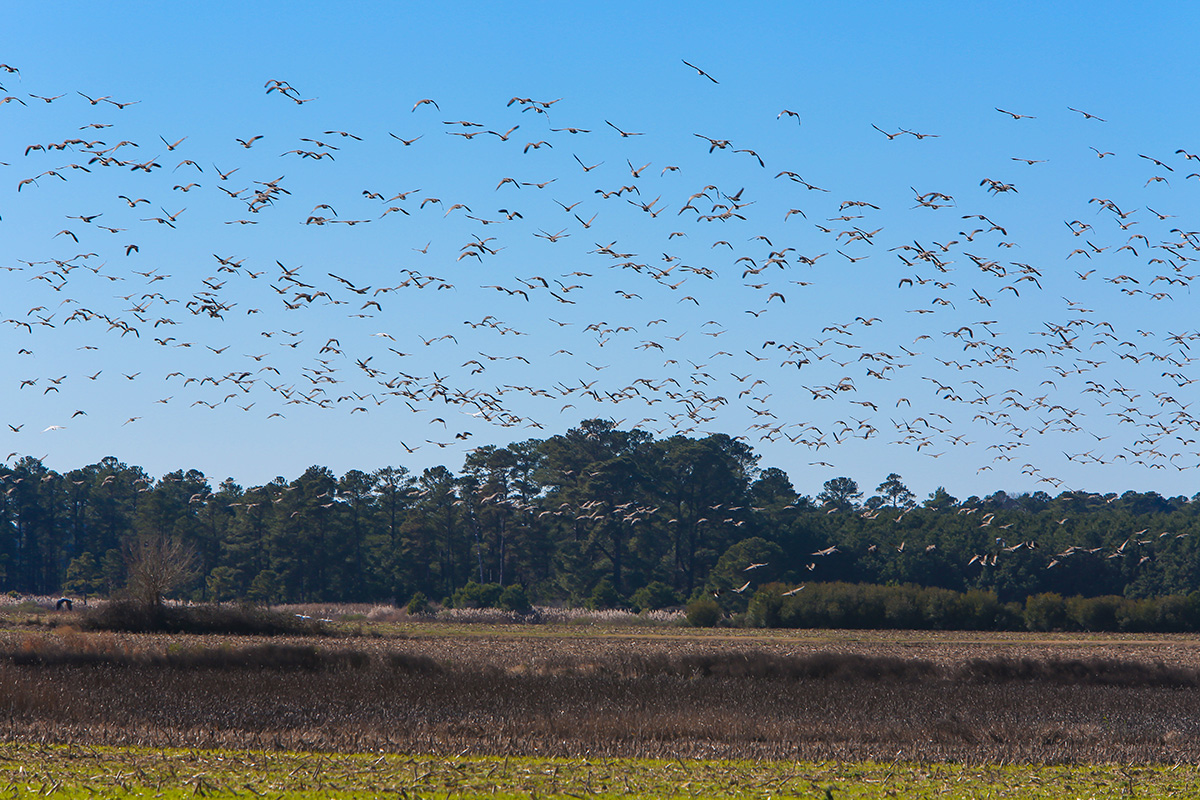
Hog Island WMA. Photo by Meghan Marchetti/DWR
(A quick note on Hog Island: it is located on the opposite side of the Virginia Power Surry Nuclear Power Plant and as such you must pass through power plant security. Security is very high and requires a full vehicle search and photo ID to gain admittance to the WMA. At other times site access may be restricted.)
Once you’re through security, the peninsula opens to a large wetland and marsh area that is packed with wildlife. Shorebirds and waterfowl abound at the site as well as herons and wading birds. Along the shoreline I was able to watch osprey and young bald eagles skirmish over fish plucked from the river. The bald eagles roosted in nearby trees and waited for the osprey to do the hard work of catching the fish. Once successful, the osprey would have to fly through a gauntlet of bald eagles all looking to bully them out of their hard-earned catch. The fighting did not stop there however, and the eagles continued to fight for the prize amongst themselves.
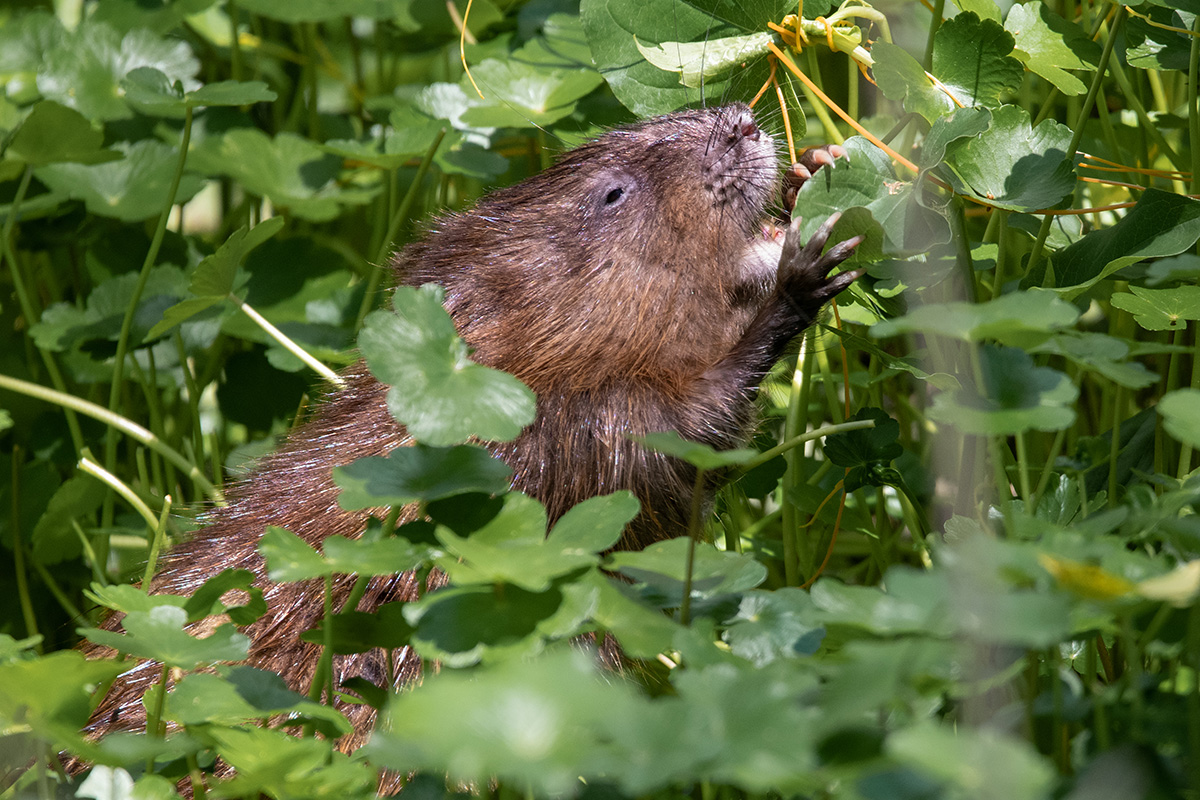
A muskrat snacking.
Further inland I encountered a muskrat feeding on floating pennywort, a water-plant native to the region. While I am sure he would have preferred solitude, he was much too preoccupied with collecting as much food as possible to be deterred by my presence, and so I was able to watch him come and go from his nest several times before moving on. Nearby I also watched as a multitude of herons and egrets hunted through the reeds of the marsh. While the birds are very common, I never tire of watching them hunt. They hunt so methodically, that it seems they almost never miss their target.

A green heron eating a crayfish.
After Hog Island the next leg of my trip took me to Ragged Island Wildlife Management Area. Ragged Island is very similar in environment to Hog Island, though much of the area is inaccessible to visitors strictly on foot. Kayaking or canoeing the site would undoubtedly allow for excellent wildlife viewing. Ragged Island boasts much of the same wildlife as Hog Island, though the boardwalk that leads visitors across the site ends at a viewing platform that looks over the wetlands and the James River. If you are very lucky you may catch a glimpse of bottlenose dolphins that are known to occasionally visit the James River, especially during the summer months!
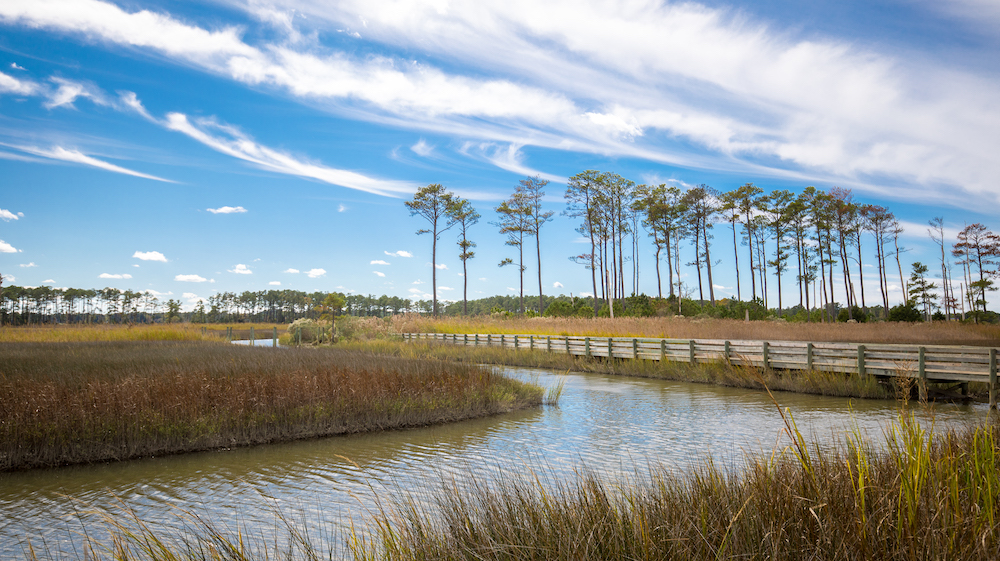
Ragged Island WMA. Photo by Meghan Marchetti/DWR
Finally, I arrived at my favorite location that I visited this month, the Big Woods Wildlife Management Area. Located inland from the river, opposed to the other wetland environments in the loop, Big Woods WMA is a huge tract of open loblolly pine forest. At almost 4,200 acres of land, Big Woods is—in addition to being picturesque—also a fantastic example of a conservation success story. The forest was previously used for timber production before being acquired by the state. Currently it is the only publicly accessible location within the commonwealth where one can view the red-cockaded woodpecker, a federally endangered species!
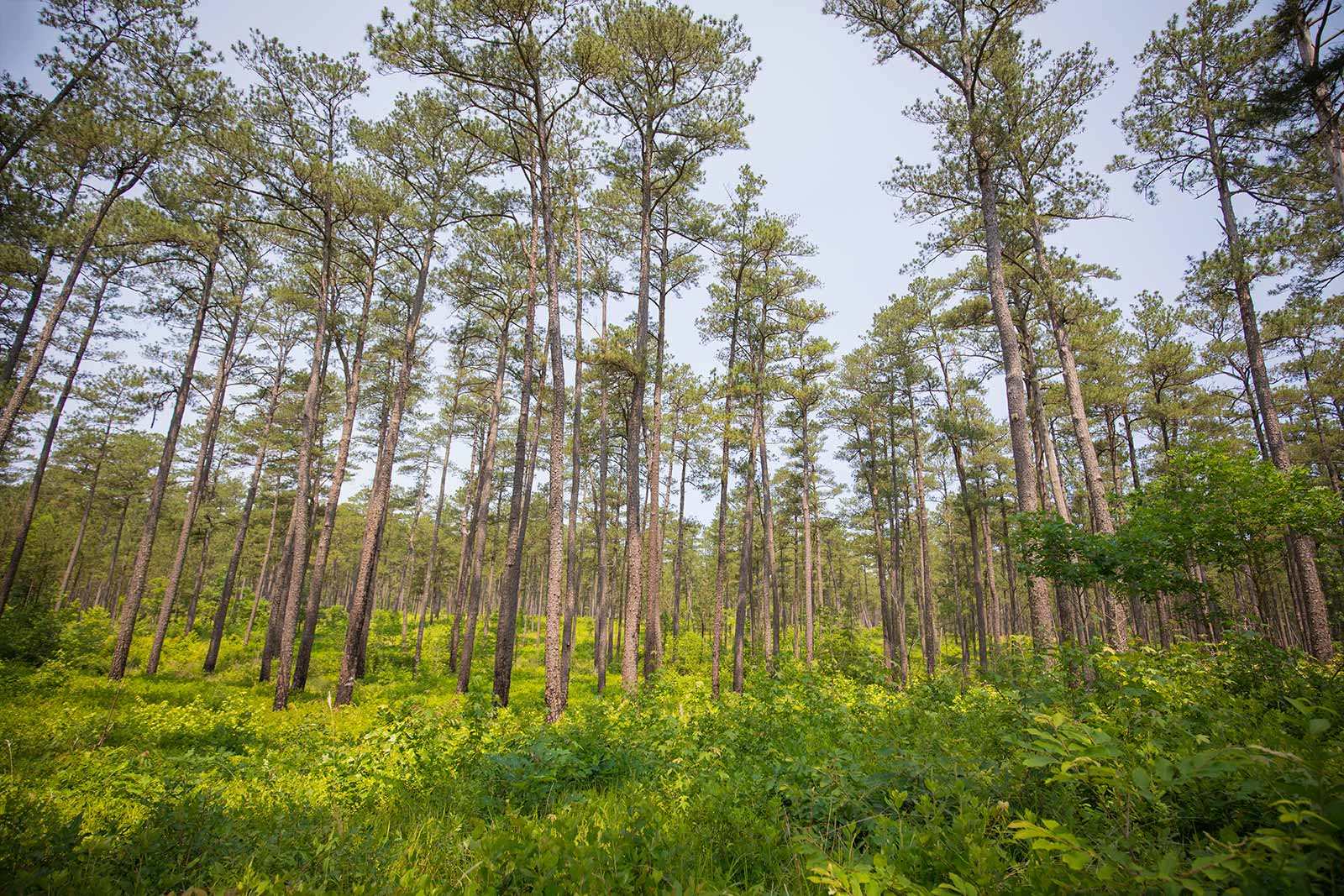
Big Woods WMA. Photo by Meghan Marchetti/DWR
Immediately upon entering Big Woods WMA I was greeted by a group of wild turkey crossing the road and a cacophony of sound from the myriad species of birds that live in the forest. It is truly a bird lovers’ paradise! While in the forest I spotted indigo buntings, summer tanagers, bobwhite quail, mourning dove, Acadian flycatcher, red shouldered hawks, and heard the call of an eastern screech owl!
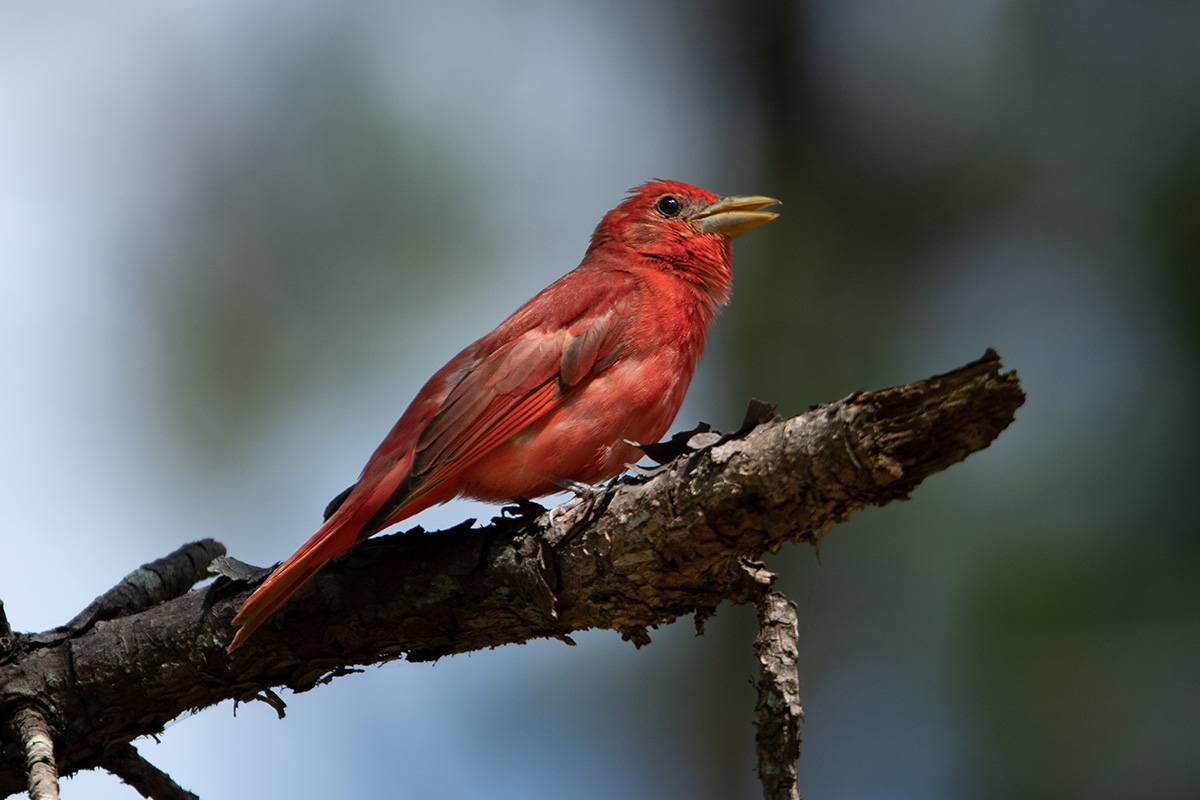
A male summer tanager.
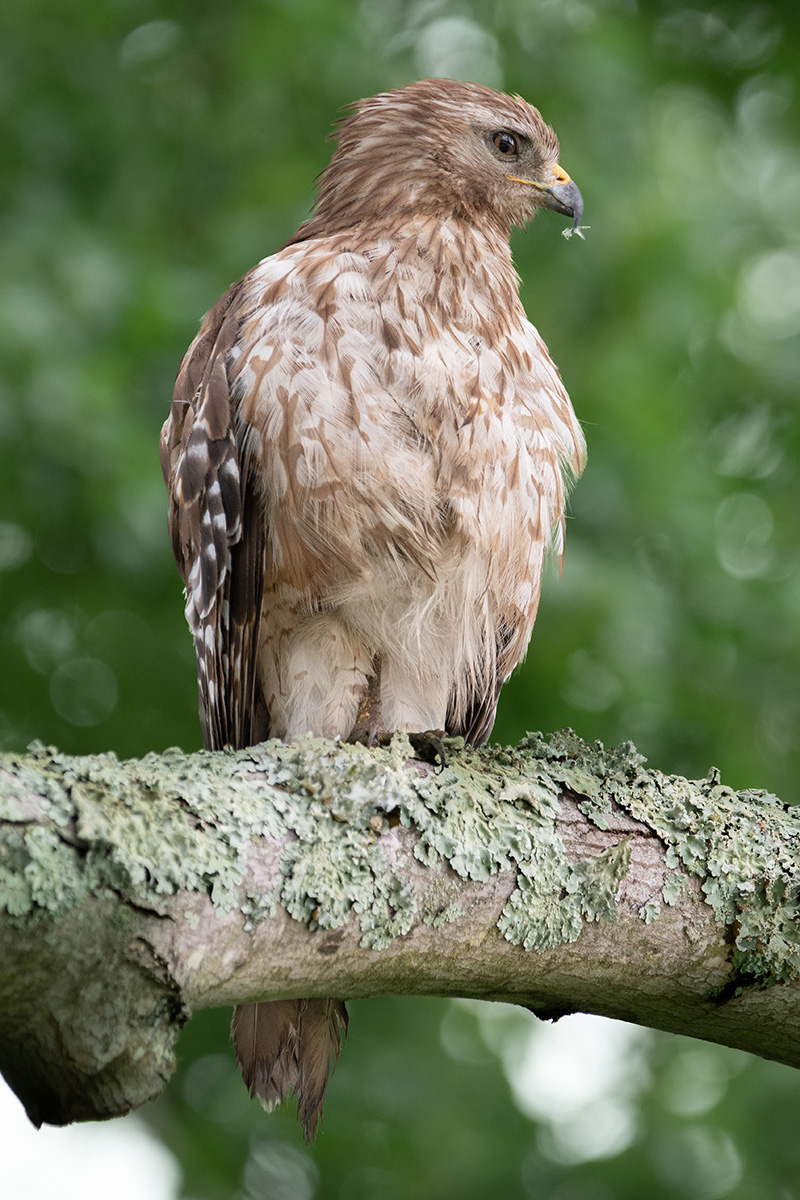
A red-shouldered hawk.
Needless to say, if you are an avid birdwatcher then Big Woods WMA is THE place for you. While all these species were a true delight to watch as they flurried back and forth amongst the pines, I had set out with the intent of seeing a red-cockaded woodpecker. Luckily, I saw not just one, but many throughout my visit. In fact, there is a dedicated red-cockaded woodpecker trail that winds through the forest and ends at a viewing area near an active nest cavity established by the species. While following this trail does grant you the best opportunity of seeing the rare bird, like many animals it is most active at dawn and dusk.
I also highly suggest using the resources on the DWR website to familiarize yourself with accurately identifying the species as it is notoriously hard to ID. This is due in part to the many other species of woodpecker that inhabit the forest, a few of which look particularly similar to the untrained eye. To illustrate, while at Big Woods I observed northern flickers, red-bellied, downy, pileated, and red-headed woodpeckers in addition to the red-cockaded.

A red-cockaded woodpecker at Big Woods WMA.
So, make sure to bring your binoculars and read up before you head out. While it may look like other birds it is very much a unique species. The information provided throughout the viewing area taught me a great deal about the species as I had never seen one in the wild beforehand.
For example, no other species of woodpecker excavates strictly live pine trees to make nests, and they often drill small holes near the entrance to their cavities so that pine resin flows down the trees and deters climbing snakes! Additionally, it lives in highly social family groups that use a cooperative breeding system, making them part of only 3% of bird species to breed in this method. Watching the members of the family systems interact in the early morning before they head out to forage is a delight and you can tell from watching alone that the species is truly special.
Leading up to my trip to the Tidewater loop I had not been able to spend much time outdoors and so I feel even more lucky to have seen so much wildlife, including an endangered species. My time spent discovering Big Woods WMA to the sounds of the songbirds was one of the more peaceful experiences I have had yet on my exploration of the Virginia Bird & Wildlife Trail, and I will not soon forget it. It also served as a strong reminder of how effective conservation efforts are and how resilient the natural world can be when we work to give it a chance to heal.
Explore the Wild with Wade Monroe

Wade Monroe is a wildlife photojournalist with a focus on wildlife conservation.
If you would like to follow along as he explores the Virginia Bird and Wildlife Trail, then make sure to subscribe to DWR’s Notes From the Field newsletter.
Follow Wade on Instagram @wademonroephoto to see all of his amazing photography.


